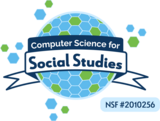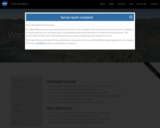
This is a Power Point slideshow covering Virginia Studies SOL 2 a, b, & c
- Subject:
- Geography
- Virginia History
- Material Type:
- Visual Media
- Author:
- BILLY DAVIS
- Date Added:
- 05/29/2020

This is a Power Point slideshow covering Virginia Studies SOL 2 a, b, & c

This activity will ask students to locate geographic regions and features on a class map using longitude and latitude measurements. Using the longitude and latitude data, students will be able to visualize geographic features in the actual location in order to analyze the living conditions of various regions.This material is based upon work supported by the National Science Foundation under Grant No. 2010256.Any opinions, findings, and conclusions or recommendations expressed in this material are those of the author(s) and do not necessarily reflect the views of the National Science Foundation.

Students will apply their knowledge of the characteristics of the five major regions to create if-statements. As a warm-up students will complete a table using IF statements.During student-facing project, students will:Create 2-3 additional variables within the conditions chart that will direct the flow to determine the correct region.Record responses provided by their partner on an excel spreadsheet.Students will use responses provided to draw a conclusion of which region their partner is “located”.

This site features World Wind 1.3, a NASA Learning Technologies application that lets the user zoom from any satellite altitude into any place on Earth. It features 3D Engine, Blue Marble, Landsat 7, SRTM, Animated Earth, MODIS, GLOBE, Country & State Borders, Place Names, Visual Tools and Landmark Set. The user can download World Wind, reference an online manual, post to an online forum, view screen shot examples from various satellites, and read press coverage about World Wind.